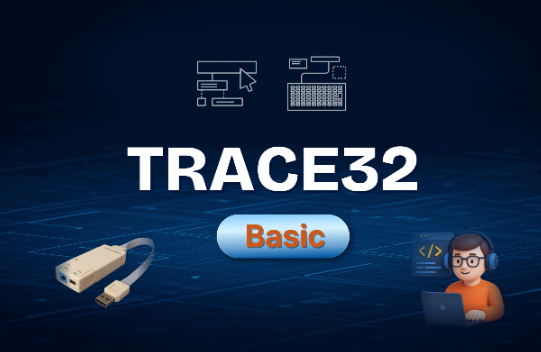![리눅스 커널의 구조와 원리: 디버깅 - Advanced 실전 [저자 직강 1부-3]강의 썸네일](https://cdn.inflearn.com/public/courses/333192/cover/bc7d9889-21ec-44d7-bcb0-10452507d7b3/333192.png?w=420)
리눅스 커널의 구조와 원리: 디버깅 - Advanced 실전 [저자 직강 1부-3]
김동현 (Austin Kim)
시스템 소프트웨어에서 가장 많이 쓰이는, 최신 리눅스 커널(v6.1)의 가장 진보된 커널 메모리 덤프 디버깅 스킬을 "디버깅을 통해 배우는 리눅스 커널의 구조와 원리"의 저자가 제대로 설명합니다.
중급이상
trace32, Linux, linux-kernel
This is an essential skill course for becoming an MCU developer that companies want to hire - TRACE32 beginner course. You can quickly learn TRACE32 debugging methods that can be immediately applied in practical work.

You can identify the cause of problems by using the TRACE32 debugger to read and modify register and memory contents.
I can write and debug CMM scripts that are widely used in TRACE32.
You can control the execution flow of code by utilizing TRACE32's breakpoint setting functionality.
You can efficiently perform dump debugging by utilizing the functionality to save or load memory dumps.
You can learn the core functions of Cortex-M3 processors and RISC-V by utilizing TRACE32's features.
Who is this course right for?
Embedded software engineer who wants to learn efficient debugging methods while developing MCU-based firmware
A junior developer who is encountering TRACE32 for the first time but must use it in their project
Linux BSP engineers who face difficulties when first bringing up boards or debugging peripheral devices
Firmware developer who wants to analyze task behavior and system behavior in an RTOS environment
Developers who want to quickly identify MCU crashes or exceptions and improve their problem-solving skills
Need to know before starting?
C language
MCU
RTOS
5,974
Learners
193
Reviews
89
Answers
4.9
Rating
22
Courses
글로벌 저자 & 리눅스 시스템 소프트웨어 개발자 (Arm, RISC-V 아키텍처)
국내 시스템 소프트웨어 분야에서 전무후무한! 'Arm 아키텍처(Armv8-A, Armv7-A)'와 '리눅스 커널' 책을 쓴 저자(2권의 책 모두 대한민국 학술원 우수도서에 선정)이며, 국내 최초로 해외 출판사(Packt)를 통해 "Reverse Engineering Armv8-A Systems" 책(영어)을 집필한 글로벌 저자입니다. 무엇보다 최신 시스템 소프트웨어 트렌드(전기자동차, 시스템 반도체- 시스템 소프트웨어)를 가장 잘 알고 있는 현업 개발자입니다. 또한 시스템 소프트웨어 분야에서 가장 지식 전파 활동을 활발하게 하는 교육자입니다.
'Reverse Engineering Armv8-A Systems: A practical guide to Kernel, Firmware, and TrustZone analysis' 책(영어) 저자, (Packt 출판사)
'시스템 소프트웨어 개발을 위한 Arm 아키텍처의 구조와 원리'(2024년, 대한민국 학술원 우수도서상) 저자
'디버깅을 통해 배우는 리눅스 커널의 구조와 원리' (2021년, 대한민국 학술원 우수도서상) 저자
'프로그래머스 데브 코스: 리눅스 시스템 및 커널 전문가' 메인 강사
2022년 6월, 한국컴퓨터종합학술대회 (KCC2022) - 튜토리얼 발표 [ftrace를 이용해 리눅스 커널 정복하기]
LG전자 '리눅스 커널' 및 'Armv8 아키텍처' 사내 강사(국내 및 해외 개발자 포함) - (2020년~현재)
국내에서 어느 누구보다 리눅스 커널과 Arm 아키텍처(Armv8-A, Armv7-A)를 잘 설명할 수 있는 교육자라고 자신있게 말씀드릴 수 있습니다.
강의문의 : austindh.kim@gmail.com
'시스템 소프트웨어 개발자를 위한 Arm - basic course'
All
81 lectures ∙ (9hr 16min)
Course Materials:
All
5 reviews
5.0
5 reviews
Limited time deal ends in 1 days
$49,500.00
25%
$51.70
Check out other courses by the instructor!
Explore other courses in the same field!